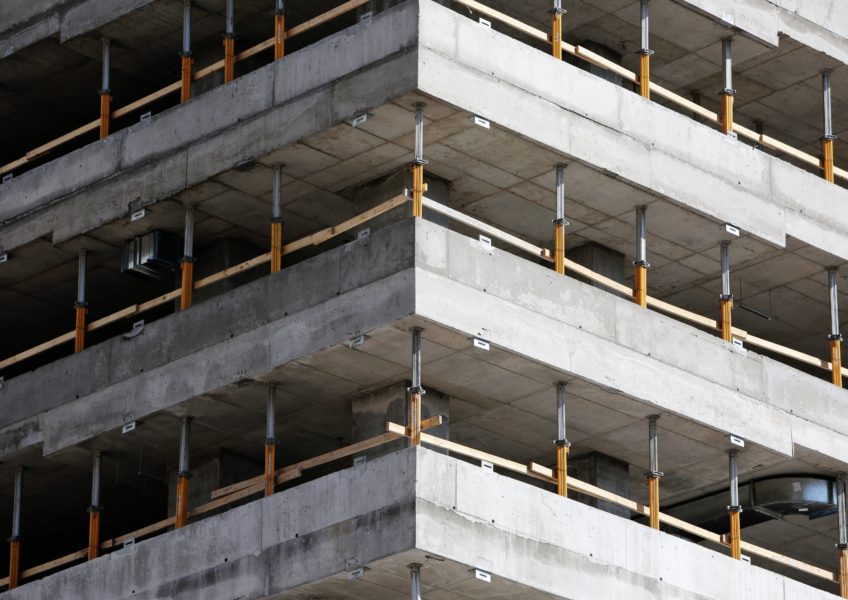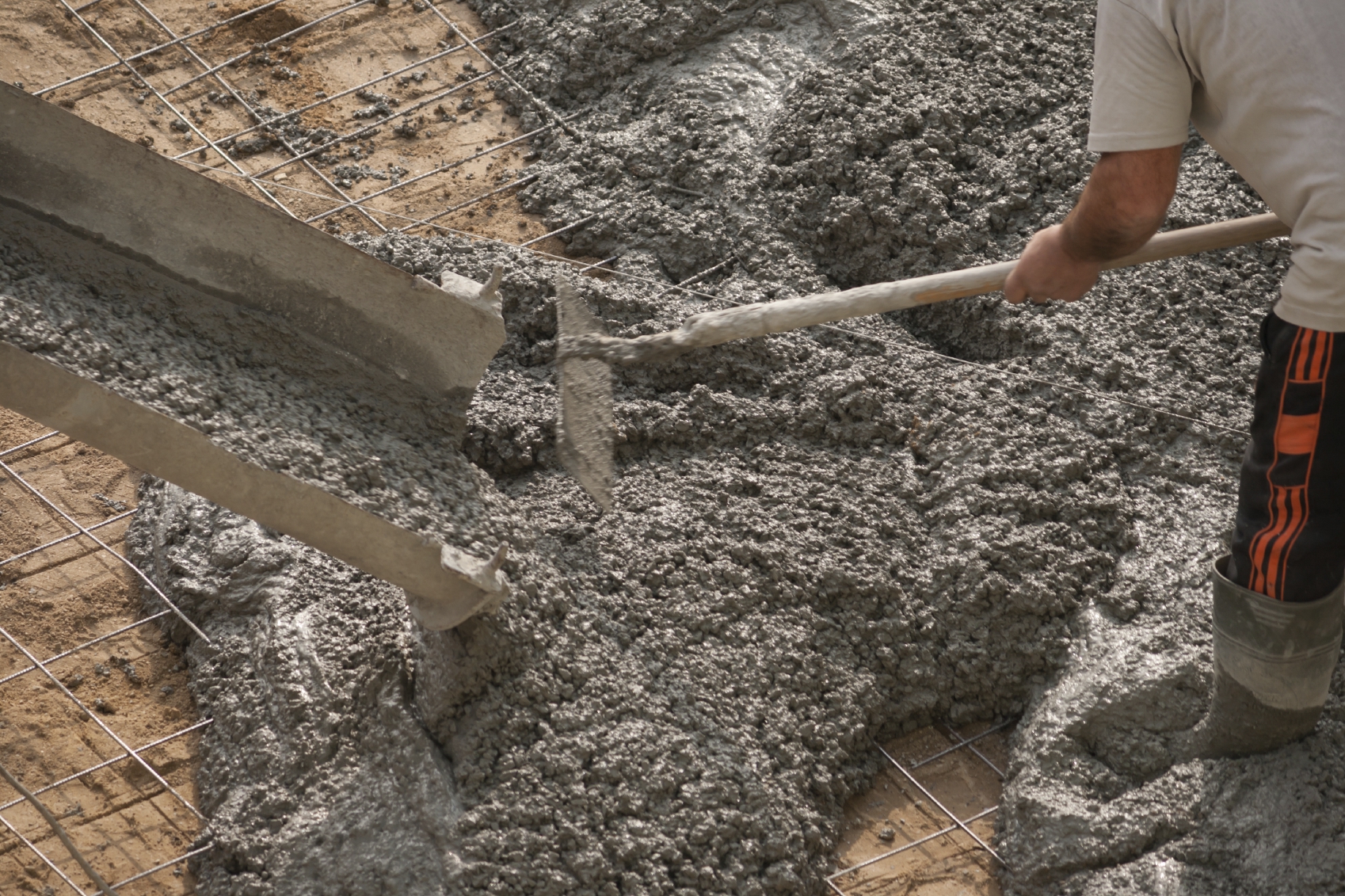The Vital Function of Concrete Structure in Structural Honesty and Long Life
When it involves constructing a property, the structure is much more essential than you might believe. Concrete structures give unparalleled toughness and longevity, ensuring your structure can endure different ecological difficulties. Without a solid base, you run the risk of prospective concerns like shifting or breaking, which can jeopardize safety and security and worth. Recognizing the subtleties of concrete foundations can be the secret to maintaining your investment for several years to come. So, what should you think about following?
Recognizing the Significance of Concrete Foundations
Concrete foundations are crucial to the overall stability of any structure, as they give the vital support needed to endure numerous loads and environmental conditions. When you believe about constructing a home or a commercial room, the structure is the first point you ought to consider. It acts as a barrier against wetness, protecting your property from water damage. A well-placed concrete structure also stops settling and shifting, which can result in cracks in wall surfaces and floors. You'll desire to ensure that the foundation is appropriately created and strengthened, as this affects the durability of your building. Furthermore, a solid structure can enhance energy performance by minimizing air leaks. Keep in mind, ignoring the significance of a concrete structure can result in costly repairs down the line. Investing in a high quality foundation upfront is essential for the stability and longevity of your structure.
Benefits of Concrete Structures for Architectural Honesty
While several variables add to a structure's architectural integrity, concrete structures use unrivaled toughness and toughness. You'll value that concrete can endure severe climate condition, withstanding both dampness and temperature level variations. This durability means your structure is less likely to experience cracking or moving gradually, which can jeopardize its safety.Additionally, concrete's integral weight offers a solid base, preventing motion throughout natural events like quakes or floodings. When you choose a concrete structure, you're likewise choosing reduced upkeep; unlike wood, it won't rot or draw in insects, saving you time and money in repairs.Moreover, concrete's fire resistance provides added security, guaranteeing your structure can sustain high temperatures without considerable damages. Generally, buying a concrete structure means you're prioritizing the long-term security and integrity of your structure, making it a sensible choice for any type of building and construction job.
Common Types of Concrete Foundations
When it concerns building foundations, comprehending the usual sorts of concrete structures can help you make informed selections for your job. One of the most prevalent kinds consist of slab-on-grade, crawl area, and complete basement foundations.A slab-on-grade foundation is a basic, affordable option, where a thick concrete piece is put straight on the ground. This type works well in cozy environments, as it decreases heat loss.Crawl area structures raise the home a little above ground, permitting ventilation and access to pipes and electrical systems. This design can assist prevent moisture issues.Full cellar structures use additional living or storage room while giving exceptional structural assistance. They need more excavation and are generally used in chillier climates to prevent frost heave.
Variables to Take Into Consideration When Creating a Concrete Foundation

Ideal Practices for Putting Up Concrete Foundations
When you're installing a concrete foundation, appropriate site preparation is important to guarantee security (West Coast General Engineering concrete foundation Rancho Cucamonga). You'll additionally need to comprehend reinforcement methods to enhance strength and sturdiness. Do not neglect the treating process, as it plays a fundamental duty in accomplishing a strong foundation.
Website Prep Work Relevance
Although it may seem straightforward, proper site preparation is crucial for guaranteeing a solid and resilient concrete structure. Start by clearing the location of any kind of debris, plants, or organic material that can endanger the foundation's integrity. Next, examine the dirt type and compaction; you may require to dig deep into or include materials to produce a steady base. Degree the ground to guarantee also weight distribution and prevent settling problems later on. Installing correct drainage systems is additionally important to prevent water buildup, which can deteriorate the foundation gradually. Mark out the foundation's measurements precisely to direct the putting procedure. By following these actions, you'll establish the phase for an effective concrete foundation that stands the test of time.
Reinforcement Techniques Clarified
Once the site is correctly prepared, the next action in assuring a sturdy concrete foundation includes executing efficient reinforcement methods. You must start by using steel rebar, which supplies tensile strength and helps protect against cracking. Lay the rebar in a grid pattern, ensuring it's raised utilizing spacers to preserve correct coverage. Furthermore, think about making use of cord mesh for additional support, specifically in areas based on heavy lots. Don't forget to link the rebar intersections securely with cable. For bigger structures, fiber support can boost durability, reducing the threat of shrinking fractures. Always comply with neighborhood building regulations and standards to guarantee compliance. By using these support techniques, you'll significantly increase your foundation's stamina and long life, laying a solid groundwork for your framework.
Healing Process Fundamentals
To assure your concrete structure remedies properly, it's important to preserve adequate moisture and temperature level problems instantly after pouring. Start by covering the surface area with a damp cloth or plastic sheeting to keep wetness. This keeps the concrete hydrated, stopping splits and making sure strength. You must likewise keep track of the temperature; ideal curing problems are in between 50 ° F and 90 ° F. If it's as well hot, haze the surface regularly to stop fast evaporation. For winter, consider using insulating coverings to preserve warmth. Go for a healing period of a minimum of seven days, as this Get the facts is essential for ideal toughness growth. By complying with these best methods, you'll boost your foundation's resilience and durability, making sure architectural stability for many years ahead.
Maintenance of Concrete Foundations for Longevity
To keep your concrete foundation solid and long-term, normal inspections are essential. You need to also guarantee reliable water drainage remedies are in location to protect against water damages. If you spot any kind of cracks, addressing them immediately will conserve you from larger problems down the line.

Routine Evaluations and Analyses
While normal inspections and analyses might feel like a chore, they're crucial for keeping the integrity of your concrete foundation. By consistently looking for fractures, changes, or indications of wear, you can capture potential issues prior to they escalate into pricey repair services. Look for any kind of water pooling around the foundation or uncommon settling, as these can signal underlying problems. It's also smart to monitor any type of changes in your house's framework, like doors that stick or windows that do not open smoothly. Keeping a document of your evaluations helps track modifications with time, enabling positive upkeep. Inevitably, these analyses assure your structure stays steady, supporting the durability and safety of your entire structure. a knockout post Don't overlook this essential facet of homeownership!
Effective Water Drainage Solutions
Regular evaluations can disclose concerns like drain problems that may jeopardize your concrete foundation's security. To stop water accumulation, ensure your gutters and downspouts direct water away from the structure. Installing French drains can successfully reroute surface and groundwater, minimizing stress on your structure wall surfaces. In addition, grading the soil around your home aids assure that water flows away, as opposed to pooling near your foundation.Consider using sump pumps in areas vulnerable to flooding, as they proactively eliminate excess water. Routinely look for obstructions in water drainage systems and clear them promptly. You'll safeguard your foundation's stability and longevity by taking these proactive measures. Keep in mind, efficient drainage options are important for keeping a solid, sturdy concrete foundation.
Motivate Split Repair Works
When you observe cracks in your concrete foundation, resolving them quickly is essential for keeping its durability. Tiny cracks can quickly advance right into bigger concerns, compromising the architectural honesty of your home. Frequently check your foundation for signs of damage, such as straight or upright fractures. If you detect any, do not wait-- repair them quickly. You can use epoxy injections or concrete patching compounds, which are reliable for sealing fractures. Constantly adhere to the producer's guidelines and take into consideration speaking with a professional for significant damage. Remember, timely repairs not just improve your structure's toughness however additionally conserve you money in the lengthy run by avoiding a lot more considerable round concrete steps design repair work down the line. Remain aggressive, and your foundation will certainly remain strong and safe.
Resolving Typical Problems With Concrete Foundations
Concrete foundations can face various problems with time, making it essential to determine and resolve them quickly. One of one of the most typical problems is fracturing, which can occur because of temperature level variations or clearing up dirt. If you discover cracks, it's vital to examine their dimension and deepness; small cracks can often be sealed, while bigger ones might need expert evaluation.Water invasion is one more significant problem. Excess moisture can result in mold and mildew development and structural degeneration. Warranty appropriate drainage around your structure to mitigate this threat. Additionally, look for signs of shifting or bowing walls, as this can indicate underlying problems with your foundation's stability.Regular evaluations are fundamental to catch these problems early. If you spot any concerning indications, don't wait to speak with a foundation specialist. By remaining positive, you can keep the stability and durability of your concrete structure, guaranteeing your home stays secure and secure.
Regularly Asked Questions
Exactly How Does Dirt Type Impact Concrete Foundation Performance?
Dirt kind significantly affects concrete structure performance. If you've got extensive clay, as an example, it can trigger moving and cracking. Sandy soil may result in clearing up. Comprehending your dirt helps assure a steady foundation.
Can Concrete Foundations Be Repaired if Damaged?
Yes, you can fix damaged concrete foundations. Relying on the extent of the damage, techniques like epoxy shot or slab jacking can recover security. It's best to speak with a professional for effective remedies.
What Is the Typical Life Expectancy of a Concrete Foundation?
A concrete structure commonly lasts 30 to 100 years, depending on variables like soil problems, environment, and maintenance. You'll desire to maintain an eye on it to assure it stays in good form throughout its lifespan.
Exist Alternative Products to Concrete for Foundations?
Yes, there are choices to concrete for foundations, like steel, hardwood, and even recycled products. Each alternative has special benefits and downsides, so you must consider your job's particular requirements when picking the appropriate material.
How Does Environment Effect Concrete Foundation Longevity?
Climate significantly affects concrete structure sturdiness (West Coast General Engineering concrete foundation Rancho Cucamonga). Severe temperature levels, wetness, and freeze-thaw cycles can damage the product, causing cracks and architectural concerns. You need to think about regional climate conditions when planning your foundation to guarantee long-lasting performance